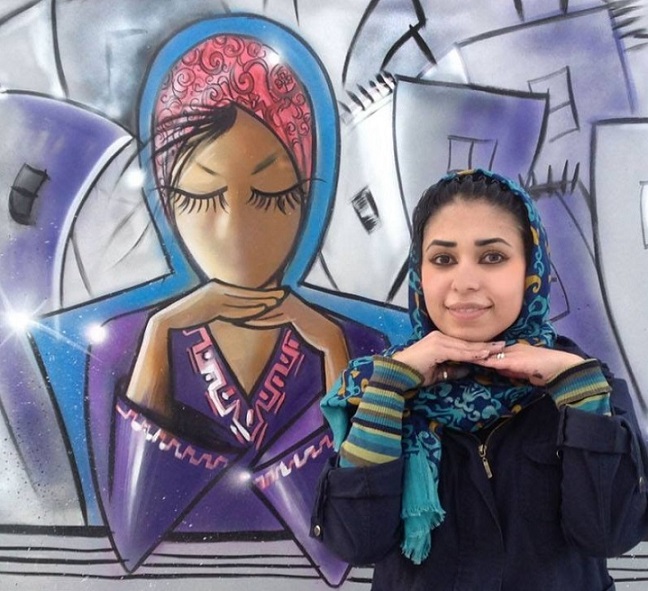Other contemporary painters and illustrators are: Marjane Satrapi (Iran, 1969-), Carmen García Huerta (Madrid, 1975-), Sarah Arnett (Brighton, UK), and Sarah Beetson (UK).
Other contemporary women who seek to give women a voice in oppressed environments or where the female voice is silenced are Rachel Corrie (USA, 1979-2003), Susan C. Faludi (USA, 1959-), and Mary Fisher (USA, 1948-).

Ommolbahni Hassani
(Shamsia)
Tehran, 1988
Period of activity: 2010 — Still active
Geographical classification: Asia > Iran
Socio-cultural movements
Late modern period / Contemporary period > Feminism
Late modern period / Contemporary period > Artistic movements since the end of the 19th century > Urban art
Groups by dedication
Activists > Feminists (activists)
Activists > Pacifists
Writers > in > Arabic
Plastic, visual and performing artists > Graffiti artists
Plastic, visual and performing artists > Sculptresses
Plastic, visual and performing artists > Photographers
Context of feminine creation
Review
She is the first female graffiti artist in Afghanistan. Through her work she portrays Afghan women in a male-dominated society.
In her works she gives women a different face, with power, ambitions and the desire to achieve their goals.
The woman that she portrays in her work is a proud woman who can bring change to people's lives.
Justifications
Biography
Shamsia Hassani was born in 1988, in Tehran, Iran, where her family of Afghan origin emigrated during the war. She shows interest in painting since she was a child.
She is not allowed to study Fine Arts, a field of study prohibited in Iran for people from Afghanistan, but since her return to Afghanistan in 2005, she studies Art at Kabul University. Later on, she goes to work at the university as an associate professor of sculpture. She is the founder of the contemporary art collective Rosht.
Hassani is initiated in the art of graffiti and begins the practice of urban art on the walls of houses in the streets of Kabul. In one of her works exhibited on the walls of the Cultural Centre of the Afghan capital, there is a woman dressed in a burqa, sitting under a staircase. The inscription below reads: "Water may return to a dry river, but what happens to the fish that died?". She paints her works quickly, in 15 minutes, to avoid any harassment, and claims that her work is not Islamic.
Hassani also presents her work in digital format through her project entitled Dreaming Graffiti. The artist works with digital images in which she explores issues of personal and national security.
She seeks to combat the oppression experienced by Afghan women in her society through her work.
https://en.wikipedia.org/wiki/Shamsia_Hassani (retrieved on 17/06/2022)
Works
Among others:
Prestige series (2016) USA.
Dreaming Graffiti (2021)
Bibliography
WEBGRAPHY:
Shamsa Hassani's website <https://shamsiahassani.net> (retrieved on 11/04/2022)
Didactic approach
She can be studied on the subjects of:
English
Visual and Plastic Arts